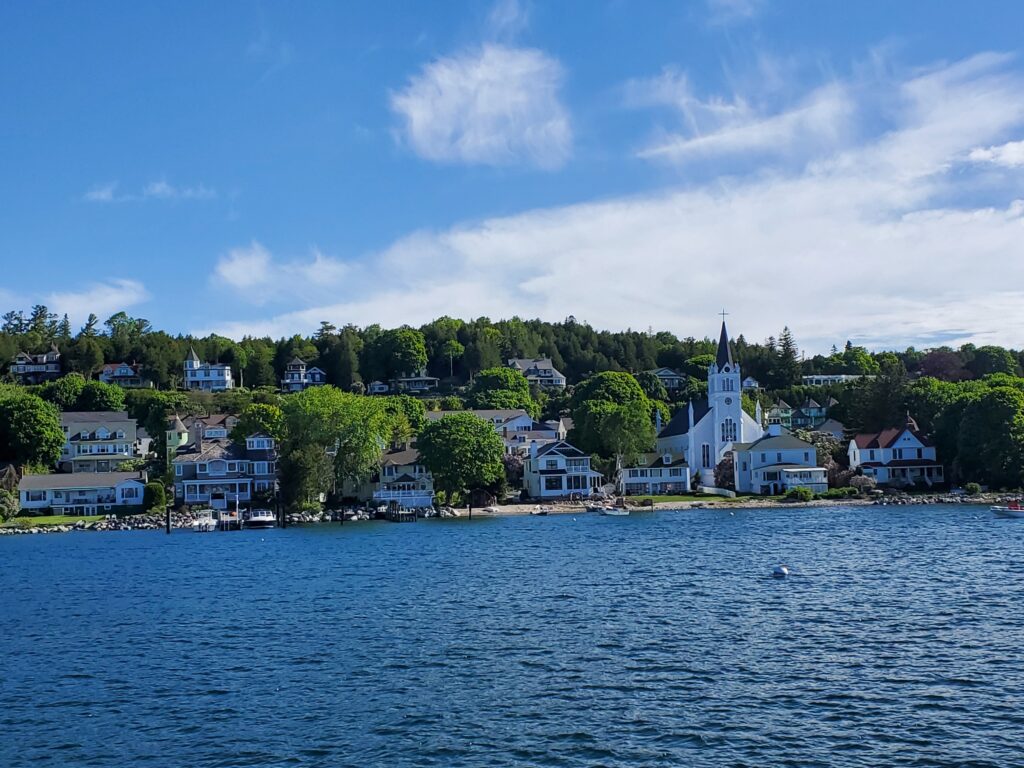Recently, I traveled by motor coach with a community group of like-minded travelers to Mackinac Island, located in Northern Michigan. This was my first trip to Michigan and excitement was in the air.
Because the ride was long and we were in a motor coach, we made many stops on our journey. One amazing stop was at The Cross In The Woods in Indian River, Michigan. The Shrine is 55 feet tall and home to the largest crucifix in the world.
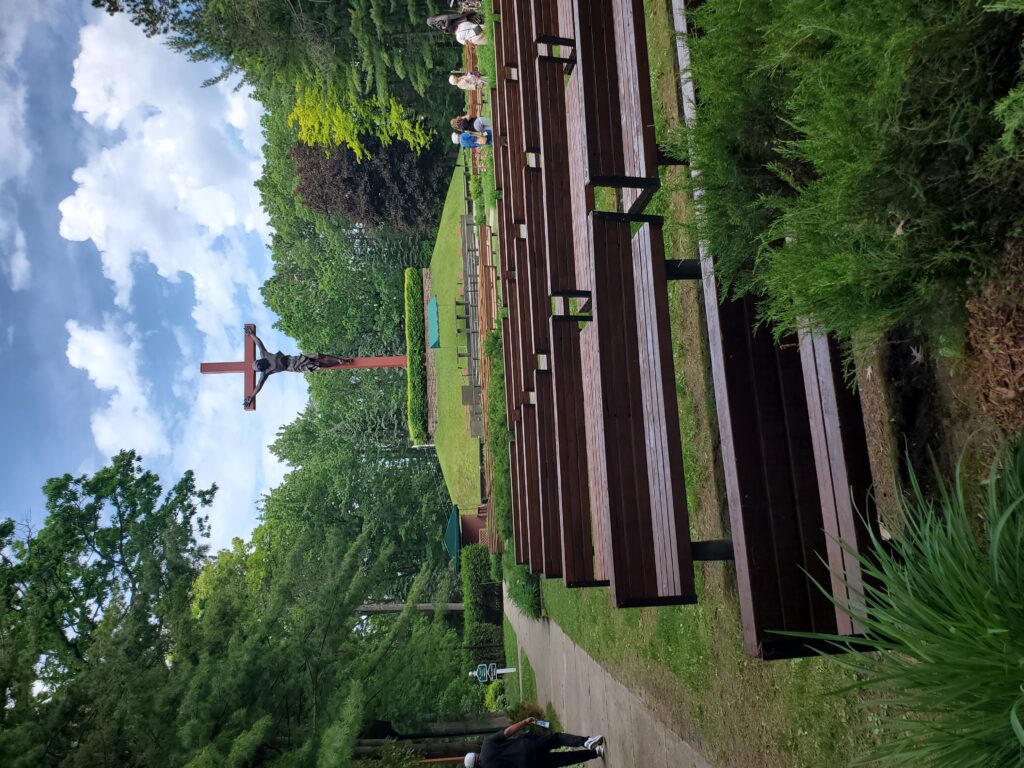
The bronze statue of Kateri Tekakwitha is called the “lily of the Mohawks.” Her father was a Chief of the Mohawk tribe. The turtles on the base if the statue remind us that her father belonged to the Turtle Clan.
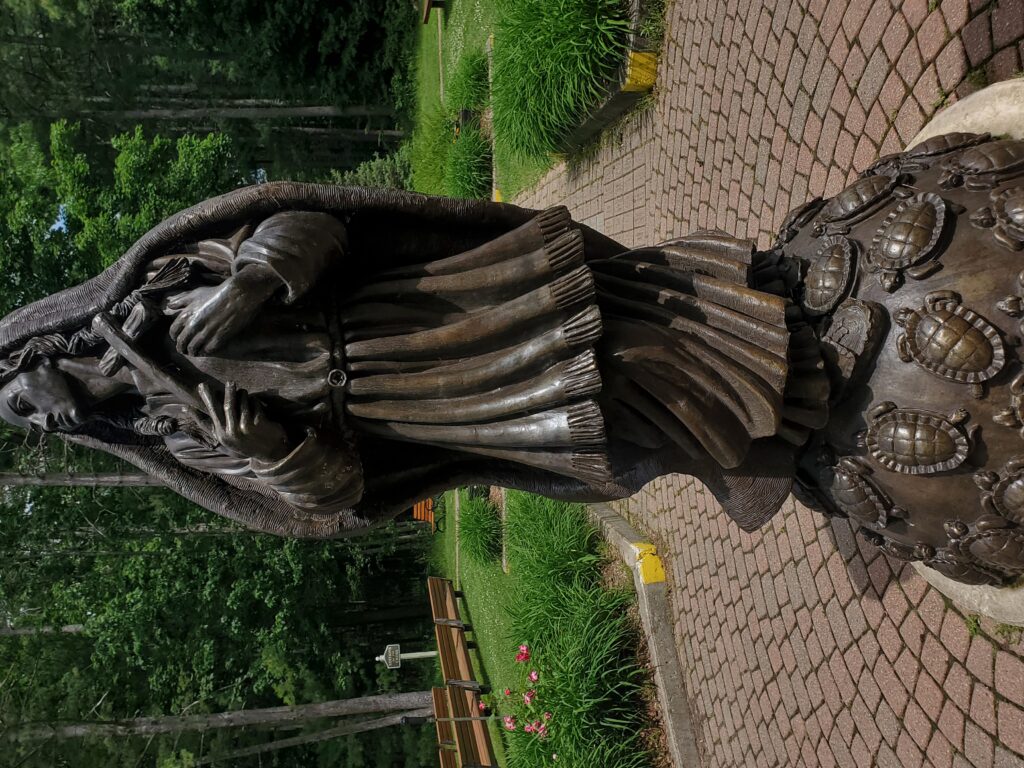
After several more rest stops, we arrived in Mackinac or Mackinaw City. We were confused because we saw signs with both spellings. We learned from our local tour guide that Mackinac is the French spelling and Mackinaw is the English spelling. Mackinac is the island and Mackinaw is the city.
In Mackinaw City, we settled into our large hotel that has a stunning view of Lake Huron. The young desk clerks and housekeepers were mostly from Jamaica. Inquiring minds wanted to know so we asked. It was explained the local hotels has been employing guest workers from Jamaica for years. Michigan, especially the tourist cities, has a work shortage. Their presence is essential to business operations. Employees explained they may work six months at time, mostly during tourist season.
The unique region of Mackinaw City was key to early Native American, French, and British culture. It’s located along the Straits of Mackinac and situated between the Upper Peninsula and Lower Peninsula. The straits connect both Lake Michigan and Lake Huron.
The first Natives were the Pottawatomie, followed by the Ottawa, and Ojibwa. During the French- Indian War of 1754-1763, the British took control. On June 2, 1763, the fort was captured by Native Americans and known as Pontiac’s Rebellion.
To get to Mackinac Island, you have to cross the Mackinac Bridge. It’s five miles and the world’s longest suspension bridge and third longest in the nation. It opened in 1957, and connects Michigan’s Lower Peninsula to the Upper Peninsula.
Mackinac Island is a picturesque place. It feels historic due to the prohibition of civilian motorized vehicles. Horses, bicycles, walking, and horses driven carriages will ensure you see the beautiful Victorian architecture, quaint shops, and the Grand Hotel. You can stop for fudge along the way!
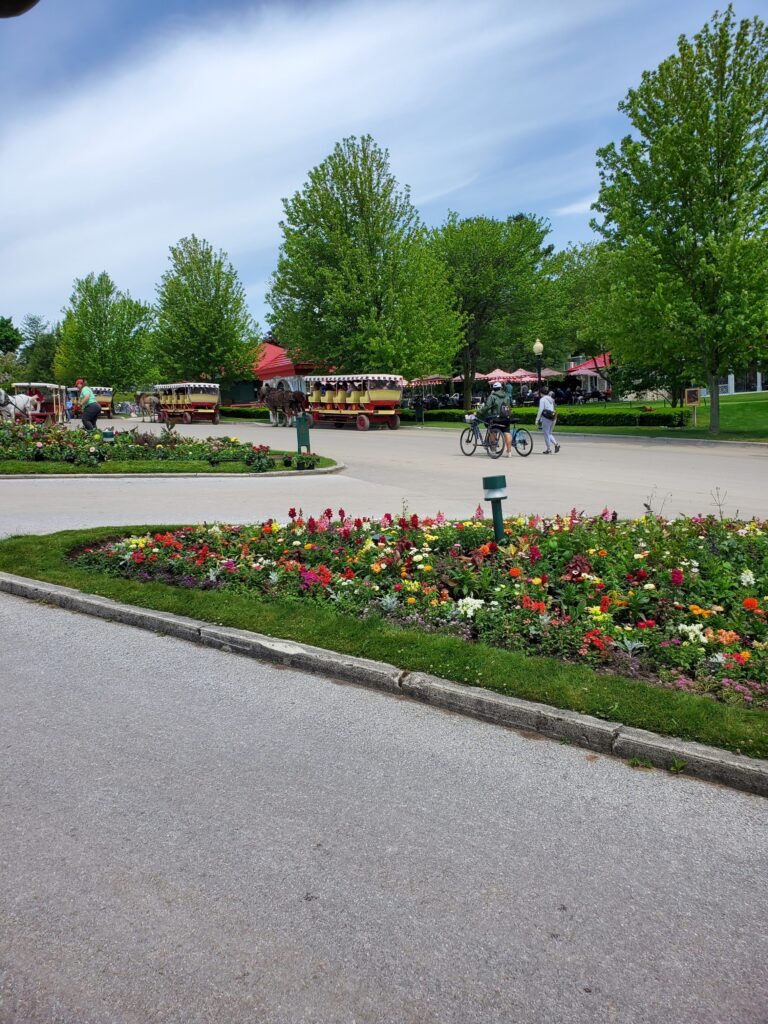
Mackinac is the shortened version of the Native American name, Michilimackinac. This Anishinaabek word means, “Place of great turtle.” The Native Americans thought Mackinac Island, with its limestone bluffs, looked like a giant turtle rising out of the water.
Mackinac Island is filled with historic sites and landmarks. Approximately 80% of the island is state parkland and landmarks that illustrates its amazing natural history. There is a Native American Cultural History Trail that we didn’t get a chance to see.
Skull Cave is a small and shallow cave on the central heights of the island. It is believed to have been the hiding place for English fur trader Alexander Henry during Pontiac Rebellion of 1763.
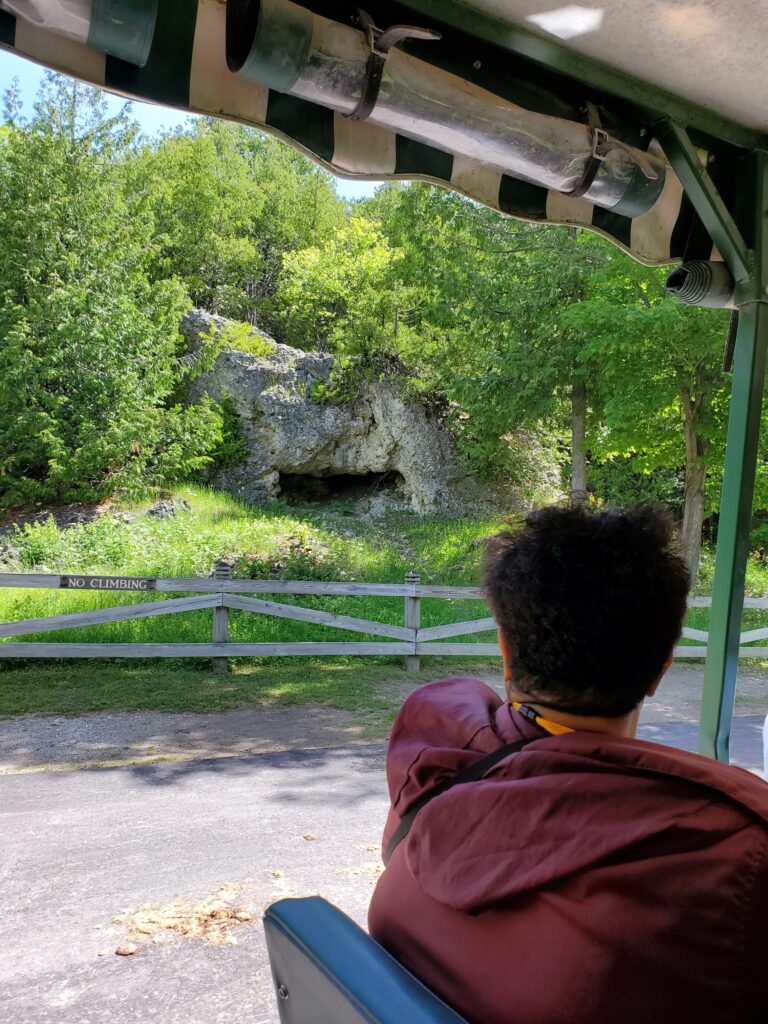
Mackinac Island has a population of approximately 500 residents. Mackinaw City has a population of approximately 800 plus residents and a poverty rate of 16.8%. Our tour guide grew up in Mackinaw City. There is one school that serves grades K-12. He graduated in 2006 with 15 other graduates.
I was surprised by the poverty rate of this magical village city. Touring the city, we did not see any obvious pockets of poverty. In 2022, the median household income was $40,804. This is lower than $60, 500 for the Mackinac Island residents. Our guide pointed out that both places have larger percentage older residents who are no longer in the labor force. It’s a tourist area, plus, it’s cold and there’s a lot of snow in Northern Michigan.
It was great visiting, but we’ll see you in the spring or summer!
Francie Mae. June 16, 2024.
